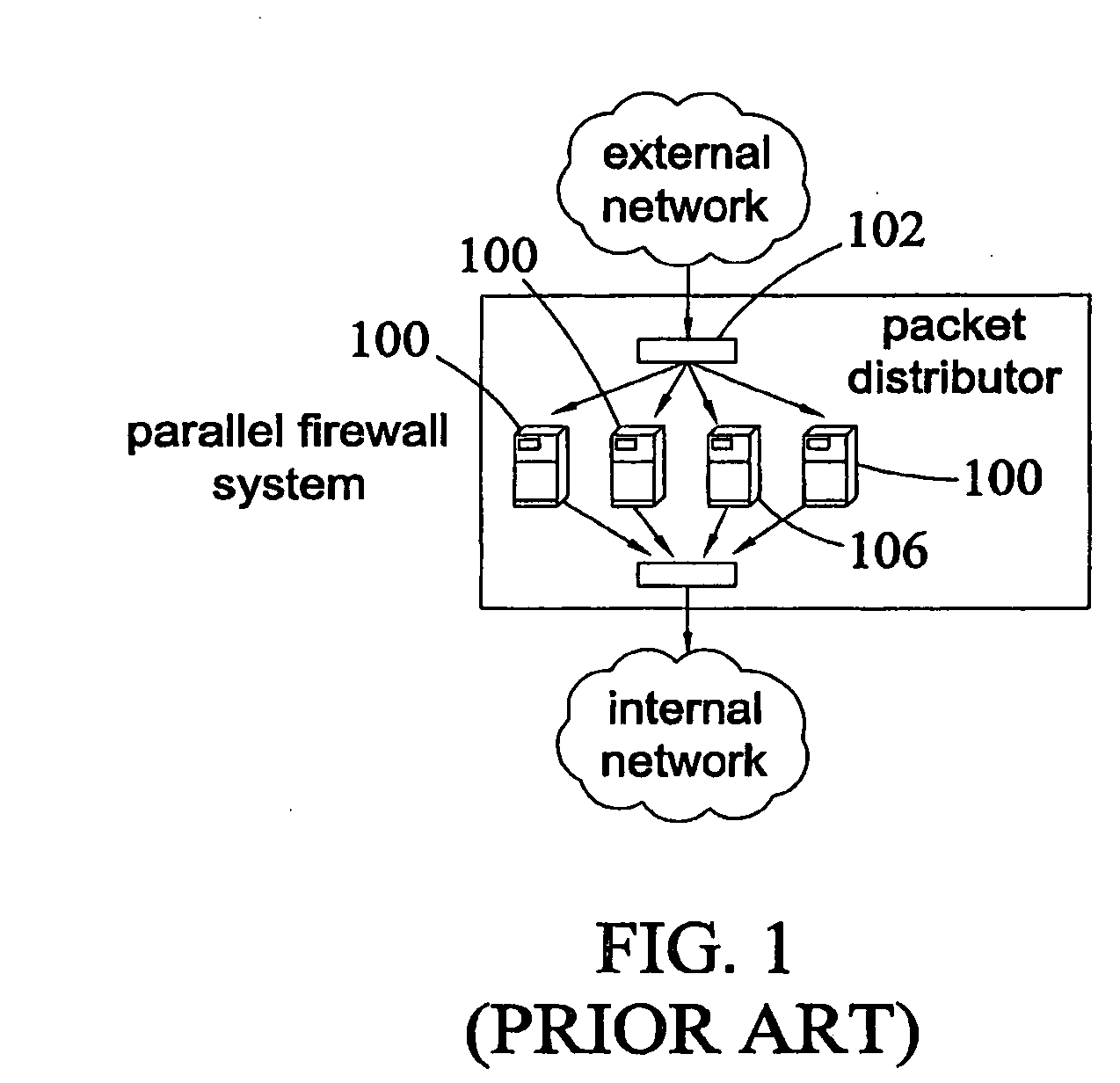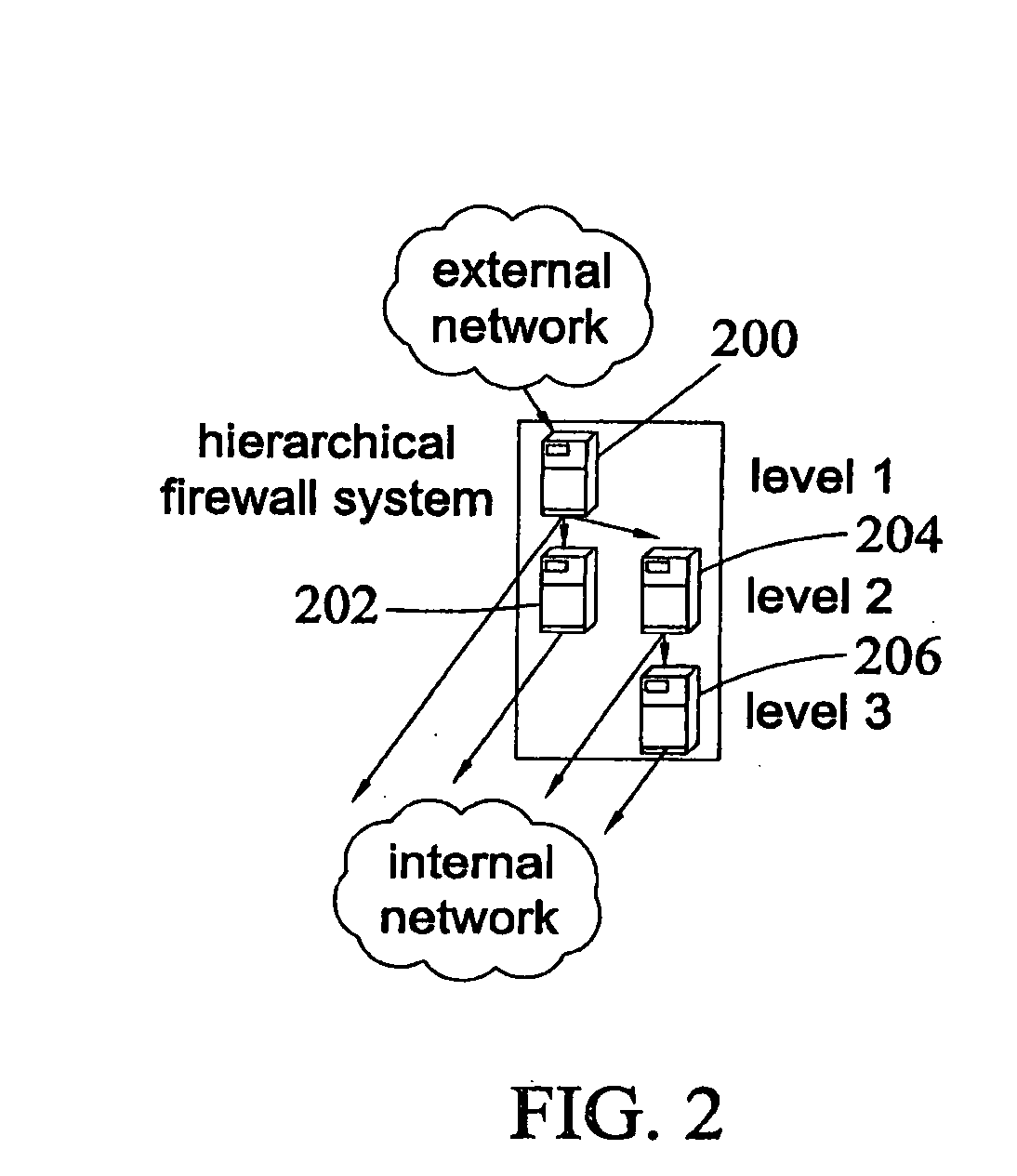Method, systems, and computer program products for implementing function-parallel network firewall
a network firewall and function-parallax technology, applied in the field of network firewalls, can solve the problems of firewalls easily becoming bottlenecks, time-consuming processes, and meaningful inspections often involve complex processes, and achieve the effects of low cost, low delay, and high availability
- Summary
- Abstract
- Description
- Claims
- Application Information
AI Technical Summary
Benefits of technology
Problems solved by technology
Method used
Image
Examples
Embodiment Construction
[0060] According to one aspect of the subject matter described herein may include multiple firewall machines configured in a hierarchy, as shown in FIG. 2. In the example illustrated in FIG. 2, a plurality of firewall nodes 200, 202, 204, and 206 collectively implement a firewall policy. Each firewall node or set of nodes implements a different level of the firewall policy in a hierarchy. For example, firewall node 200 may implement a first level of a firewall policy that includes rules that are not present in subsequent levels. If a packet passes the first level of screening, the packet may be forwarded immediately to the internal network without impacting other firewall nodes. If the packet is identified as requiring further scrutiny, the packet may be forwarded to the next level where it is screened by firewall node 202 or 204 using rules that were not applied by firewall node 200. If the packet passes level 2 screening, the packet may be forwarded directly to the internal networ...
PUM
 Login to View More
Login to View More Abstract
Description
Claims
Application Information
 Login to View More
Login to View More - R&D
- Intellectual Property
- Life Sciences
- Materials
- Tech Scout
- Unparalleled Data Quality
- Higher Quality Content
- 60% Fewer Hallucinations
Browse by: Latest US Patents, China's latest patents, Technical Efficacy Thesaurus, Application Domain, Technology Topic, Popular Technical Reports.
© 2025 PatSnap. All rights reserved.Legal|Privacy policy|Modern Slavery Act Transparency Statement|Sitemap|About US| Contact US: help@patsnap.com



